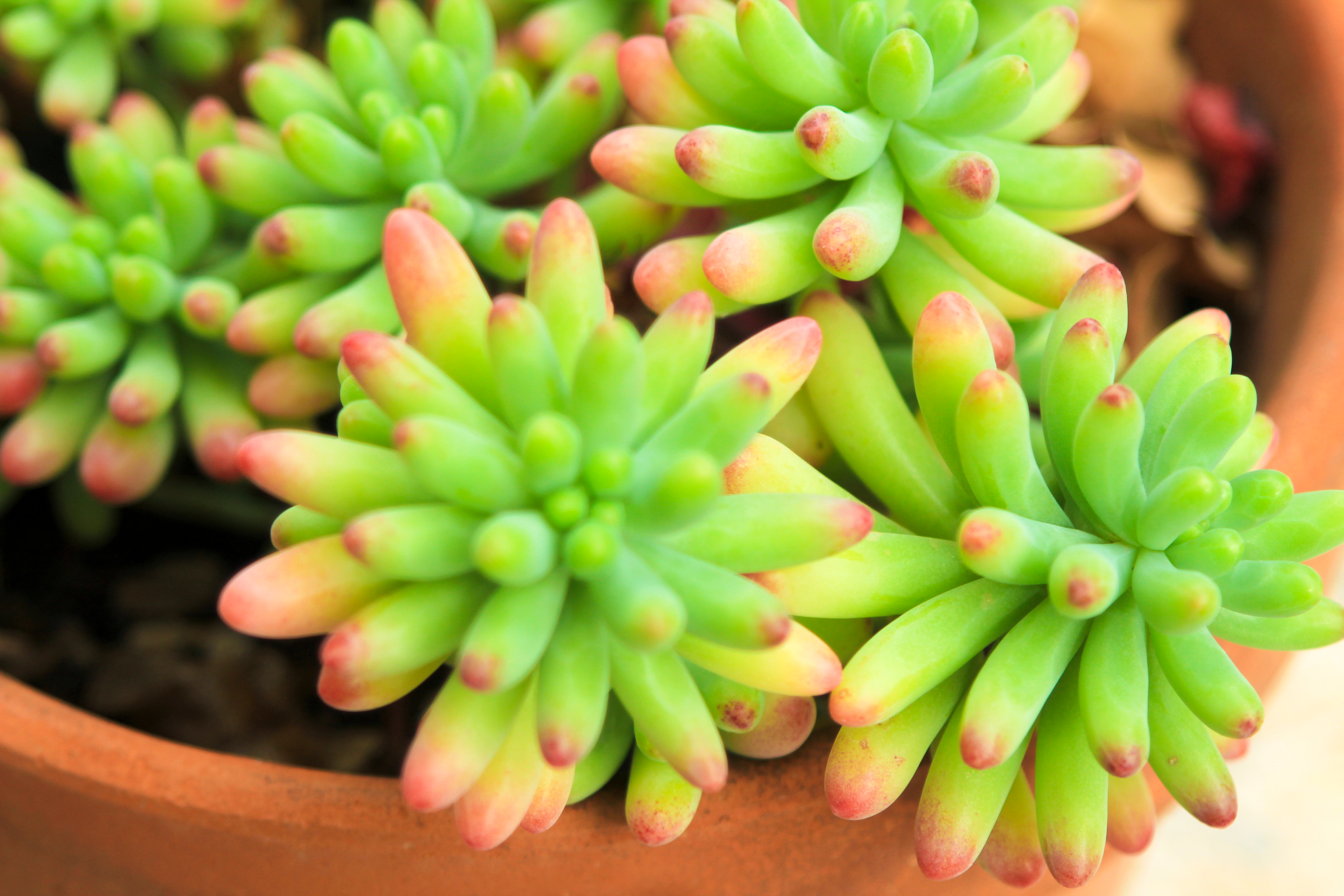Jellybean Sedum
(Sedum rubrotinctum)

Description
Sedum rubrotinctum or Sedum × rubrotinctum, and commonly known as jelly-beans, jelly bean plant, or pork and beans. It is a species of Sedum from the plant family Crassulaceae. It is a succulent plant originating in Mexico. The plant is nicknamed for its short leaves that resemble jelly beans, especially when taking on a protective hue. It was named officially as a distinct species in 1948. The leaves of Sedum rubrotinctum change colour from green to red during the summer months as a protective adaptation. The plant sprouts bright yellow flowers from between the leaves in mid-spring. Sedum rubrotinctum is cultivated as an ornamental plant, for planting in gardens and as potted plants. It is grown very easily and tolerates all types of soil except for those that are poorly drained. It grows very well in summer, can take variations in climate, although it is not frost-tolerant. New plants may be grown from leaves (or beans) that drop off or are separated from the stem and laid on soil. This plant has won the Royal Horticultural Society's Award of Garden Merit. Sedum rubrotinctum is poisonous and may cause irritation when ingested or touched. Sedum is a large genus of flowering plants in the family Crassulaceae, members of which are commonly known as stonecrops. The genus has been described as containing up to 600 species, subsequently reduced to 400–500. They are leaf succulents found primarily in the Northern Hemisphere, but extending into the southern hemisphere in Africa and South America. The plants vary from annual and creeping herbs to shrubs. The plants have water-storing leaves. The flowers usually have five petals, seldom four or six. There are typically twice as many stamens as petals. Various species formerly classified as Sedum are now in the segregate genera Hylotelephium and Rhodiola. Sedum was first formally described by Carl Linnaeus in 1753, with 15 species. Of the genera encompassed by the Crassulaceae family, Sedum is the most species rich, the most morphologically diverse and most complex taxonomically. Historically it was placed in the subfamily Sedoideae, of which it was the type genus. Of the three modern subfamilies of the Crassulaceae, based on molecular phylogenetics Sedum is placed in the subfamily Sempervivoideae. Although the genus has been greatly reduced, from about 600 to 420–470 species, by forming up to 32 segregate genera, it still constitutes a third of the family and is polyphyletic.
Taxonomic tree:







